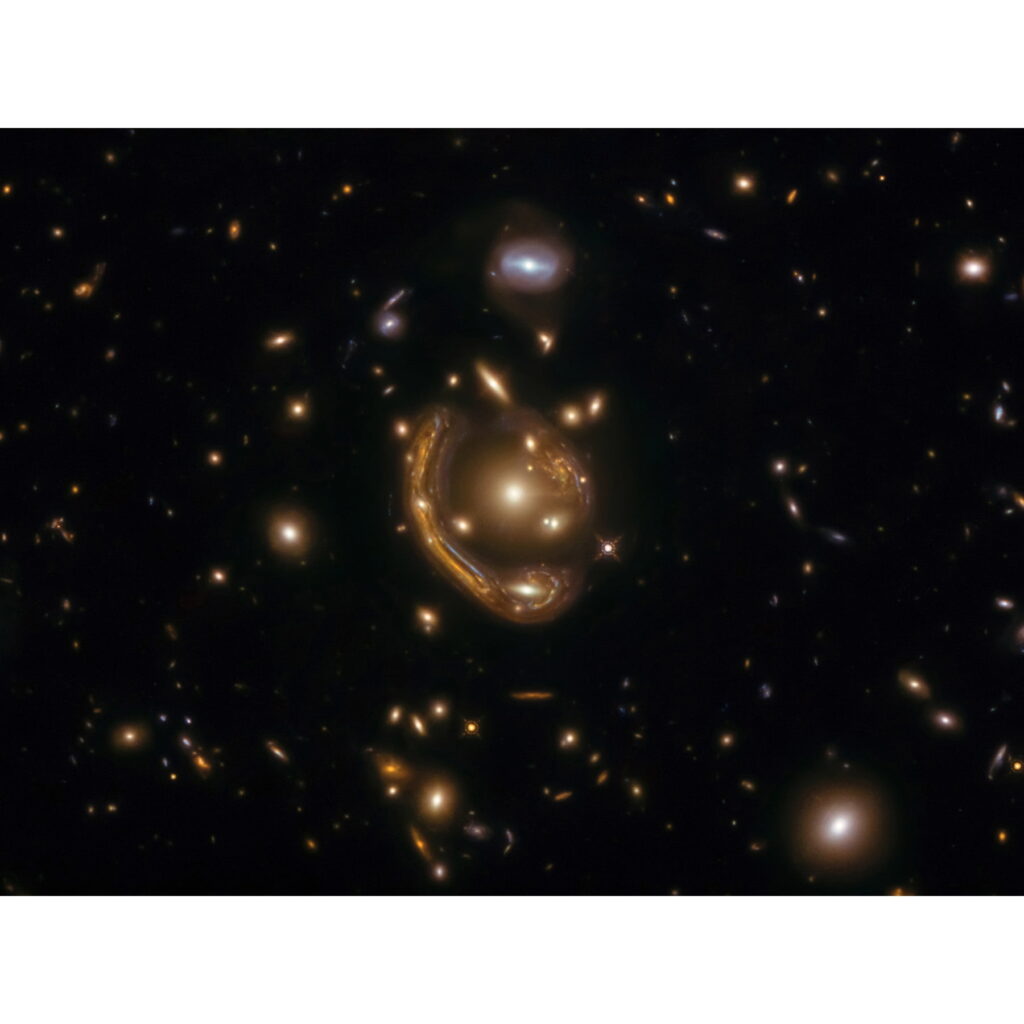
Audience
- Sentiment: positive
- Political Group: Science Enthusiasts
- Age Group: Teens
- Gender: All Genders
Overview
- The Euclid space telescope has made significant discoveries, including an Einstein ring, enhancing our understanding of dark matter and dark energy.
- The telescope’s observations are expected to create the most detailed 3D map of the universe ever, revealing hidden structures and galaxy formation.
- Discoveries in astrophysics connect humanity and inspire curiosity about the cosmos and our place within it.
The Wonders of the Cosmos: Euclid’s Incredible Discovery of an Einstein Ring
Imagine standing on a clear night, gazing up at a blanket of stars twinkling in the vast expanse of the universe. Each star tells a story, each constellation holds a mystery, and every moonlit night invites your imagination to soar into the cosmos. Now, thanks to recent advancements in technology, we’re unveiling secrets that were once out of reach. One of these advancements is the Euclid space telescope, a remarkable device that has recently made headlines with its awe-inspiring discovery of an Einstein ring.
What is the Euclid Space Telescope?
First, let’s take a moment to understand what the Euclid telescope is and why it’s making such a buzz. Launched in July 2023, the Euclid telescope is designed to observe the universe like never before. Picture it as a super-smart camera, with the ability to focus on distant galaxies and reveal their hidden secrets. It was built by scientists and engineers with one main goal: to explore the mysterious components of our universe — especially dark matter and dark energy.
You may be wondering, what exactly are dark matter and dark energy? Think of dark matter as an invisible glue that holds galaxies together. It doesn’t emit light, so we can’t see it directly, but we can observe its effects on visible matter, like stars and galaxies. Dark energy, on the other hand, is the force that seems to be causing the expansion of the universe to speed up. Together, dark matter and dark energy compose about 95% of the universe, leaving only about 5% for everything we can see — planets, stars, and galaxies. Fascinating, right?
The Discovery of the Einstein Ring
Now, let’s talk about what the Euclid telescope has discovered. Just two months after its launch, it spotted something extraordinary: an Einstein ring! This specific discovery was made around a galaxy known as NGC 6505, located about 590 million light-years away from Earth. To put that distance into perspective, if you could travel at the speed of light — which is the fastest speed possible — it would still take you nearly 600 million years to reach it. That’s mind-blowing!
So, what exactly is an Einstein ring? Named after the famous physicist Albert Einstein, this phenomenon occurs when a massive object (like a galaxy) bends the light of a more distant object behind it. Imagine the massive galaxy as a giant lens that warps the light around it, creating a circular image — like a ring! This effect is called gravitational lensing, and it’s an important tool for astronomers trying to study distant galaxies and their composition.
The discovery was particularly exciting for researchers because this Einstein ring, nicknamed “Altieri’s lens” after astronomer Bruno Altieri, is a chance to peek into the heart of the galaxy and learn about its dark matter. Isn’t it incredible that we can study the composition of something so distant, so long ago, merely by observing the light that bends around it?
The Science Behind the Discovery
Now that we have a broad understanding, let’s dive a bit deeper into why this discovery is significant. When the telescope measured the mass of the galaxy NGC 6505, researchers discovered that only 11% of its central mass is made up of dark matter. This is a crucial piece of the puzzle, as understanding the distribution of dark matter in galaxies helps scientists piece together how galaxies form and evolve over time.
Before this discovery, many questions lingered in the minds of scientists: How did galaxies like NGC 6505 come into existence? What role does dark matter play in shaping them? By using the Euclid telescope to create detailed observations, scientists can begin to answer these questions. This process is similar to detectives piecing together clues from a crime scene to solve a mystery.
Understanding the distribution of dark matter also helps us learn about the universe’s history. Years ago, scientists might have thought that galaxies were formed primarily from what we can see, but now we know that dark matter is a crucial component. It influences how galaxies group together and how stars form within them.
Mapping the Universe
The Euclid telescope is expected to create the most detailed 3D map of the universe we’ve ever seen. Over its mission, it is estimated to uncover over 100,000 gravitational lenses! Can you imagine that? Each one of those lenses represents a chance to learn more about different parts of the universe. This mapping project will illuminate hidden structures, allowing scientists to comprehend the fractal organization of galaxies.
This 3D map is not just a collection of pretty pictures. It will allow researchers to study the large-scale structure of the universe and its evolution. By observing how galaxies cluster and interact, scientists can build more accurate models of how the universe behaves. This information is vital not only for understanding the cosmos but also for predicting future phenomena.
The Bigger Picture: Dark Matter and Galaxy Formation
The findings from Euclid’s observations play a crucial role in the overall understanding of the dark universe. As we learn more about dark matter, it will help scientists form better theories about galaxy formation and the universe’s expansion. One day, we may be able to answer even bigger questions that have puzzled scientists for ages. When did the universe begin? What lies beyond the edge of the observable universe? What is the ultimate fate of the universe?
These questions provoke excitement and curiosity. They remind us that we are merely scratching the surface of the vast, complex tapestry of existence. Every discovery, including Altieri’s lens, opens new doors to deeper inquiry.
A Personal Connection
What’s truly amazing about discoveries like these is that they connect us all. We may be sitting in our classrooms, reading about an Einstein ring light-years away, but that discovery represents humanity’s quest for knowledge. Every time we unveil a new cosmic secret, it brings us one step closer to understanding who we are and how we fit into this grand universe.
Have you ever looked up at the night sky and wondered about the stars? Or imagined how many planets and galaxies are waiting to be discovered? It’s these moments that spark our curiosity and drive us to explore, ask questions, and learn. As a 9th grader, you might find yourself facing huge challenges in school or grappling with the complexity of life. Still, remember that every great scientist began with a simple question — And it’s your turn to ask yours.
What Do You Think?
As we continue our journey of discovery together, we’re left with a fascinating question: What excites you the most about discoveries in space? Does the idea of exploring galaxies, understanding dark matter, or mapping the universe resonate with your curiosity? Share your thoughts in the comments below! Your insights might inspire others to look up at the stars and wonder too. After all, who knows what you might discover?






